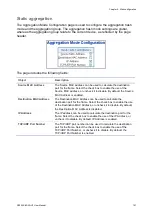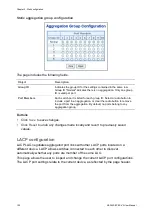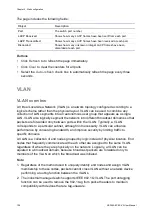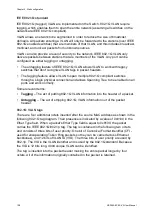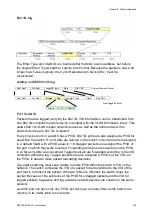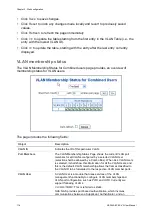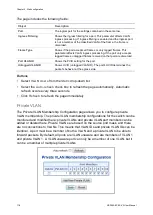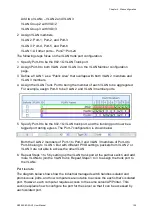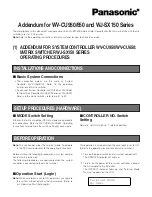
Chapter 4: Web configuration
110
NS3552-8P-2S-V2 User Manual
Because some devices on a network may be tag-unaware, a decision must be made at
each port on a tag-aware device before packets are transmitted – should the packet to
be transmitted have a tag or not? If the transmitting port is connected to a tag-unaware
device, the packet should be untagged. If the transmitting port is connected to a tag-
aware device, the packet should be tagged.
Default VLANs
The industrial managed switch initially configures one VLAN, VID = 1, called "default."
The factory default setting assigns all ports on the Switch to the "default." As new
VLANs are configured in port-based mode, their respective member ports are removed
from the "default."
Assigning ports to VLANs
Before enabling VLANs for the switch, you must first assign each port to the VLAN
group(s) in which it will participate. By default, all ports are assigned to VLAN 1 as
untagged ports. Add a port as a tagged port to have it carry traffic for one or more
VLANs, and any intermediate network devices or the host at the other end of the
connection supports VLANs. Then assign ports on the other VLAN-aware network
devices along the path that will carry this traffic to the same VLAN(s), either manually or
dynamically using GVRP. However, if you want a port on this switch to participate in
one or more VLANs, but none of the intermediate network devices nor the host at the
other end of the connection supports VLANs, then this port should be added to the
VLAN as an untagged port.
Note:
VLAN-tagged frames can pass through VLAN-aware or VLAN-unaware network
interconnection devices, but the VLAN tags should be stripped off before passing them
on to any end-node host that does not support VLAN tagging.
VLAN classification
When the switch receives a frame, it classifies the frame in one of two ways. If the
frame is untagged, the switch assigns the frame to an associated VLAN (based on the
default VLAN ID of the receiving port). If the frame is tagged, the switch uses the
tagged VLAN ID to identify the port broadcast domain of the frame.
Port overlapping
Port overlapping can be used to allow access to commonly shared network resources
among different VLAN groups, such as file servers or printers. Note that if you
implement VLANs that do not overlap but still need to communicate, they can be
connected by enabling routing on this switch.
Untagged VLANs
Untagged (or static) VLANs are typically used to reduce broadcast traffic and to
increase security. A group of network users assigned to a VLAN form a broadcast
domain that is separate from other VLANs configured on the switch. Packets are
forwarded only between ports that are designated for the same VLAN. Untagged
VLANs can be used to manually isolate user groups or subnets.
Summary of Contents for NS3552-8P-2S-V2
Page 1: ...NS3552 8P 2S V2 User Manual P N 1073552 EN REV B ISS 25JAN19 ...
Page 41: ...Chapter 3 Switch management NS3552 8P 2S V2 User Manual 39 ...
Page 73: ...Chapter 4 Web configuration NS3552 8P 2S V2 User Manual 71 ...
Page 147: ...Chapter 4 Web configuration NS3552 8P 2S V2 User Manual 145 ...
Page 511: ......






